Courtesy of James R. Touchstone, Esq.
In a case filed on October 27, 2020, in Cortesluna v. Luna,[1] the Ninth Circuit Court of Appeals reversed the lower court’s grant of summary judgment to an officer who the plaintiff claimed used excessive force. In reaching its conclusion, the Court determined that the officer was not entitled to qualified immunity for briefly placing his knee on the back of the suspect, who was armed, while the officers were taking him into custody.
Background
In November 2016, police officers Manuel Leon, Daniel Rivas-Villegas, Sergeant Robert Kensic, (“Defendants”) and two other officers of the City of Union City (“City”) Police Department responded to a 911 call. The police dispatcher reported that a 12-year-old girl said that her mother’s boyfriend had a chainsaw and was trying to hurt her, her sister, and her mother, who were together in a room. The dispatcher also relayed the girl’s statement that the boyfriend was “always drinking” and was using the chainsaw to break something in the house. The dispatcher further reported that there had been another potentially related 911 call in the area and that, on that call, crying could be heard, but the caller hung up without speaking. The sister had described the boyfriend, Ramon Cortesluna, and his clothing to the dispatcher.
When the first three officers, including Rivas-Villegas and Kensic, arrived at the scene, they observed Cortesluna’s home for several minutes and saw that “[Cortesluna] is right here” in his window and “doesn’t have anything in his hand” except, at some points, a beer. The officers checked with dispatch to confirm that the caller really reported a chainsaw. The dispatcher acknowledged “we can’t hear [a chainsaw] over the phone” but suggested that Cortesluna could be using the chainsaw “manually,” and that the operator stated that, during the call, she heard sawing sounds in the background, as if the boyfriend were trying to saw the bedroom door down. Leon arrived at the scene later and may have heard the radioed conversation with the dispatcher.
Another officer told Leon, “so, he’s standing right here drinking a beer. What do you think [about] just giving him commands, having him come out, and do a protective sweep?” The officers decided on a plan to approach the house and “breach it with less lethal, if we need to,” a reference to Leon’s beanbag shotgun.
Rivas-Villegas knocked on the front door, stating, “[P]olice department, come to the front door, Union City police, come to the front door.” A few seconds later, Cortesluna emerged from a sliding glass door holding a large metal object, thought to be a crowbar. After Cortesluna was ordered to “drop it,” he dropped the object. Meanwhile, Leon said, “I’m going to hit him with less lethal,” that is, his beanbag shotgun, and told another officer to get out of his way.
Rivas-Villegas then ordered Cortesluna to come out, put his hands up, and walk out towards the officers. As Cortesluna walked towards them, Rivas-Villegas then said, “Stop. Get on your knees.” Cortesluna stopped approximately ten to eleven feet from the officers. Immediately after Rivas-Villegas’ order, Kensic spotted a knife in the left pocket of Cortesluna’s sweatpants. Kensic announced that Cortesluna had a knife in his left pocket, and then told Cortesluna, “[D]on’t, don’t put your hands down” and “hands up.” After Kensic shouted this last order, Cortesluna turned his head toward Kensic, who was on Cortesluna’s left side, (and away from Leon, who was on Cortesluna’s right side) and simultaneously lowered his head and his hands. Leon immediately shot Cortesluna with a beanbag round from his shotgun and quickly fired a second beanbag shot while Cortesluna’s hands were still in a downward position near his belly, where the first shot hit. The second shot hit him on the hip. Roughly two seconds elapsed between Kensic’s “hands up” order and the second shot.
After the second shot, Cortesluna again raised his hands over his head. The officers ordered him to “[G]et down.” As Cortesluna was lowering himself to the ground, Rivas-Villegas used his foot to push Cortesluna to the ground. Rivas-Villegas then pressed his knee into Cortesluna’s back and pulled Cortesluna’s arms behind his back. Leon handcuffed Cortesluna’s hands while Rivas-Villegas held his position for a few moments. Rivas-Villegas then lifted Cortesluna up by his handcuffed hands and moved him away from the doorway.
Cortesluna filed a complaint asserting a claim under 42 U.S.C. section 1983 against Leon and Rivas-Villegas for excessive force; a Section 1983 claim against Kensic for failing to intervene and stop the excessive force; and a claim against the City under Monell v. Department of Social Services, 436 U.S. 658 (1978), for the officers’ actions, and other state law claims.
The District Court granted summary judgment to the individual Defendants on the federal claims. The District Court ruled both that the force used by Leon and Rivas-Villegas was objectively reasonable in the circumstances and that they were entitled to qualified immunity. The District Court also and ruled that Kensic had no reasonable opportunity to intervene and therefore could not be liable. With summary judgment granted in favor of the individual Defendants, the District Court dismissed Cortesluna’s claim against the City, as well as the state law claims. Cortesluna appealed from the summary judgment entered in favor of the individual Defendants and the City.
Discussion
The Ninth Circuit Court of Appeals affirmed in part, and reversed in part, the District Court’s summary judgment in favor of the defendants and remanded the case for further consideration.
The Court explained that qualified immunity protects individual officers “from liability for civil damages insofar as their conduct does not violate clearly established statutory or constitutional rights of which a reasonable person would have known.” Pearson v. Callahan, 555 U.S. 223, 231 (2009) (internal quotation marks omitted). In evaluating an assertion of qualified immunity, courts undertake a two-part analysis, asking (1) “whether the facts taken in the light most favorable to the plaintiff show that the officer’s conduct violated a constitutional right,” and (2) whether that right was “clearly established at the time of the officer’s actions, such that any reasonably well-trained officer would have known that his conduct was unlawful.” Orn v. City of Tacoma, 949 F.3d 1167, 1174 (9th Cir. 2020).
At step one, courts determine whether a reasonable jury could conclude that an officer’s use of force violated the Fourth Amendment by “balancing ‘the nature and quality of the intrusion on the individual’s Fourth Amendment interests against the importance of the governmental interests alleged to justify the intrusion.’” Id. (quoting Tennessee v. Garner, 471 U.S. 1, 8 (1985)). The Ninth Circuit stated that the most important factor in this analysis is “whether the suspect posed an immediate threat to the safety of the officers or others.” C.V. ex rel. Villegas v. City of Anaheim, 823 F.3d 1252, 1255 (9th Cir. 2016) (internal quotation marks omitted). For this inquiry, courts must view the facts from “the perspective of a reasonable officer on the scene, rather than with the 20/20 vision of hindsight.” Graham v. Connor, 490 U.S. 386, 396 (1989). Summary judgment may be granted to an officer if, “after resolving all factual disputes in favor of the plaintiff,” the court concludes that the force used was “objectively reasonable under the circumstances.” Scott v. Henrich, 39 F.3d 912, 915 (9th Cir. 1994).
At step two, courts decide whether the officer’s conduct violated “clearly established” law. Plumhoff v. Rickard, 572 U.S. 765, 768 (2014). The Supreme Court has repeatedly instructed courts “not to define clearly established law at a high level of generality.” Ashcroft v. al-Kidd, 563 U.S. 731, 742 (2011). Existing precedent must already have placed the constitutional or statutory question beyond debate. Kisela v. Hughes, 138 S. Ct. 1148, 1152 (2018) (per curiam). The Ninth Circuit observed that courts have interpreted the Supreme Court’s instructions to mean that liability does not attach unless a case exists in which a police officer acting under similar circumstances was held to have violated the Fourth Amendment. Emmons v. City of Escondido, 921 F.3d 1172, 1174 (9th Cir. 2019) (per curiam).[2]
The Court of Appeals affirmed the District Court’s summary judgment in favor of Officer Leon. The Ninth Circuit held that even taking Cortesluna’s version of the facts as true, a reasonable jury would not find a Fourth Amendment violation because Leon’s acts were objectively reasonable under the circumstances. The Court determined that the alleged crime was severe: a twelve-year-old girl told a 911 dispatcher that Cortesluna had threatened his girlfriend and her daughters with a chainsaw. The Court then determined that Officer Leon faced an immediate threat. The Court noted that Cortesluna had a knife in the left pocket of his pants and had lowered his hands toward his thighs—and thus toward the knife—after which Leon fired a beanbag shotgun. Finally, the Court determined that Cortesluna’s hands remained near the knife in his pocket at the time of the second beanbag shot.
The Ninth Circuit reversed the summary judgment in favor of Officer Rivas-Villegas. The Court held that there was a genuine issue of fact as to whether the force that Rivas-Villegas used when he kneeled on Cortesluna’s back when he was lying face down on the ground was excessive.
The Court explained that by the time Rivas-Villegas put pressure on Cortesluna’s back, Cortesluna no longer posed a risk. Cortesluna was lying face down on the ground, experiencing visible pain from having been shot by the two beanbag rounds, and not resisting. Cortesluna alleged that he thereafter suffered ongoing neck and back pain, headaches, and emotional distress on account of Rivas-Villegas’ actions.
The Court then determined that controlling precedent in LaLonde v. County of Riverside, 204 F.3d 947, 952 (9th Cir. 2000) had by the time of the incident here put officers on notice that kneeling on a prone and non-resisting person’s back so hard as to cause injury was excessive. In LaLonde, an officer grabbed the plaintiff, knocked him to the ground, straddled him, and handcuffed him. 204 F.3d at 952. Allegedly, another officer then “forcefully put his knee into LaLonde’s back, causing him significant pain” and a lingering back injury. Id. The Ninth Circuit in that case reversed the summary judgment entered in favor of the officers because the allegations, if true, “constitute[d] a clear violation of [LaLonde’s] Fourth Amendment rights.” Id. at 962. The Ninth Circuit here observed that both LaLonde and the instant case involved suspects who were lying face-down on the ground and were not resisting either physically or verbally, on whose back the defendant officer leaned with a knee, causing allegedly significant injury.
Moreover, the parallels continued with regards to the most critical moment of when excessive force was employed.[3] In LaLonde, an officer “forcefully put his knee into [the plaintiff’s] back” after the plaintiff had been sprayed with pepper spray and had stopped resisting arrest. 204 F.3d at 952, 959 n.17. Here, at the time in question, Cortesluna was prone, similarly was not resisting arrest, and similarly was visibly injured by a prior use of force. The LaLonde Court concluded that the officers were not entitled to qualified immunity. The Ninth Circuit here decided that officers in Rivas-Villegas’ position were thus on notice that their substantially similar conduct was unconstitutional. Accordingly, the Court concluded that Rivas-Villegas was not entitled to qualified immunity.
The Ninth Circuit affirmed the lower court’s summary judgment in favor of Sergeant Kensic, finding that he lacked any realistic opportunity to intercede to stop the excessive force. Finally, because the Court reversed the grant of summary judgment as to Officer Rivas-Villegas, the Ninth Circuit remanded to the District Court for consideration of the other elements of Cortesluna’s claim against the City under Monell. For the same reason, the Court reinstated Cortesluna’s state-law claims relating to Rivas-Villegas’ conduct.
Concurring in part and dissenting in part, Judge Collins concurred in the majority opinion insofar as it partially affirmed the District Court’s judgment dismissing Cortesluna’s claims of excessive force in connection with his arrest. However, Judge Collins disagreed with the majority’s reversal of the judgment in favor of Officer Rivas-Villegas and its partial reversal of the judgment dismissing Cortesluna’s claims against the City. Judge Collins would have affirmed the judgment in its entirety.
In reaching this conclusion, Judge Collins noted the following: “After being shot with the beanbag rounds and starting to get on the ground, Cortesluna still had the knife in his left pocket—i.e., on the side where Rivas-Villegas placed his knee. Using a knee on that side to ensure that Cortesluna stayed down and did not make a motion toward the knife was eminently reasonable in light of what the officers knew about the situation. Kingsley v. Hendrickson, 576 U.S. 389, 399, 135 S. Ct. 2466, 192 L. Ed. 2d 416 (2015) (“we have stressed that a court must judge the reasonableness of the force used from the perspective and with the knowledge of the defendant officer”). The majority erroneously discounts the threat presented by the knife, asserting that, because it was “protruding blade-up” in Cortesluna’s pocket, “it would not have been possible for Plaintiff to grab it and attack anyone.” See Maj. Opin. at 15. The majority overlooks the fact that, as the videotape makes clear, the knife was loosely sitting in the large pocket of Cortesluna’s baggy pajama bottoms—meaning that Cortesluna could have fit his hand into the pocket to reach the handle.”
Judge Collins’ observations concerning this incident are well taken.
HOW THIS AFFECTS YOUR AGENCY
Agencies will observe that the majority addressed Judge Collins’s assertion that the Court’s holding likely would eliminate the use of a knee to protectively hold down a non-resisting suspect while handcuffing him. The majority found this concern to be unwarranted because the Court held only that police may not kneel on a prone and non-resisting person’s back so hard as to cause injury. LaLonde, 204 F.3d at 959. The majority explained, “Just as our tight-handcuff cases have not eliminated handcuffs, our holding today should not infringe on an officer’s ability to secure a compliant and prone suspect without injury.”
While the majority may speculate that this ruling will not have an adverse effect on police tactics in taking an armed suspect into custody, the implications of this ruling could have profound effects for both officer safety and civil liability exposure. Simply because a suspect is not resisting at a particular moment does not mean that the suspect could not immediately reverse course until taken safely into custody and take swift, violent action against officers. As observed by Judge Collins, one factor that is particularly troubling with respect to this opinion, which the majority seemed to gloss over with relative ease, is the fact that Cortesluna still had a knife in his pocket, thus making it readily accessible, while the officers were attempting to handcuff him. Nevertheless, agencies should be aware of this ruling and its potential implications for training and policy purposes.
As always, if you wish to discuss this matter in greater detail, please feel free to contact me at (714) 446–1400 or via email at jrt@jones-mayer.com.
Information on www.jones-mayer.com is for general use and is not legal advice. The mailing of this Client Alert Memorandum is not intended to create, and receipt of it does not constitute, an attorney-client-relationship.
[1] Cortesluna v. Leon, 2020 U.S. App. LEXIS 33792 (9th Cir. Oct. 27, 2020)
[2] The Court mentioned that an exception exists (though not applicable here) for “the rare ‘obvious case,’ where the unlawfulness of the officer’s conduct is sufficiently clear even though existing precedent does not address similar circumstances.” District of Columbia v. Wesby, 138 S. Ct. 577, 590 (2018) (quoting Brosseau v. Haugen, 543 U.S. 194, 199 (2004) (per curiam)).
[3] See Graham, 490 U.S. at 396.


